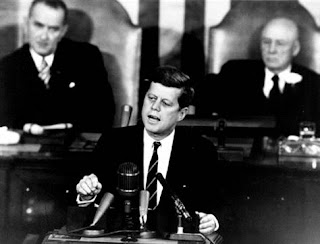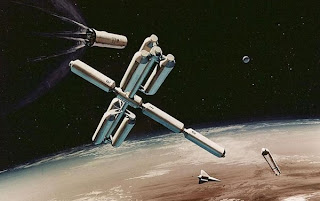
While America pauses to remember President Kennedy’s moon challenge 50 years ago, three famous astronauts think we have “strayed widely from President Kennedy’s vision and the will of the American people.”
Neil Armstong and Eugene Cernan, the first and last men to walk on the moon, joined Jim Lovell, whose ill-fated Apollo 13 mission cut short his journey to the lunar surface, have written a column in USA Today, suggesting that President Obama advisors, “in searching for a new and different NASA strategy with which the president could be favorably identified, have ignored NASA’s operational mandate.”
After tracing America’s awesome achievements of the past five decades, the retired astronauts note how the Constellation program NASA was developing to venture back to the moon and on to Mars enjoyed near unanimous support in Congress and the Bush administration but fell behind schedule and was deemed “not viable” by a review panel, due to inadequate funding.
SHOCK WAVES
When the president failed to include funds for Constellation in his 2010 budget, “it sent shock waves throughout NASA, the Congress and the American people. Nearly $10 billion had been invested in design and development of the program,” they said.
Read More
Neil Armstong and Eugene Cernan, the first and last men to walk on the moon, joined Jim Lovell, whose ill-fated Apollo 13 mission cut short his journey to the lunar surface, have written a column in USA Today, suggesting that President Obama advisors, “in searching for a new and different NASA strategy with which the president could be favorably identified, have ignored NASA’s operational mandate.”
After tracing America’s awesome achievements of the past five decades, the retired astronauts note how the Constellation program NASA was developing to venture back to the moon and on to Mars enjoyed near unanimous support in Congress and the Bush administration but fell behind schedule and was deemed “not viable” by a review panel, due to inadequate funding.
SHOCK WAVES
When the president failed to include funds for Constellation in his 2010 budget, “it sent shock waves throughout NASA, the Congress and the American people. Nearly $10 billion had been invested in design and development of the program,” they said.
Read More












